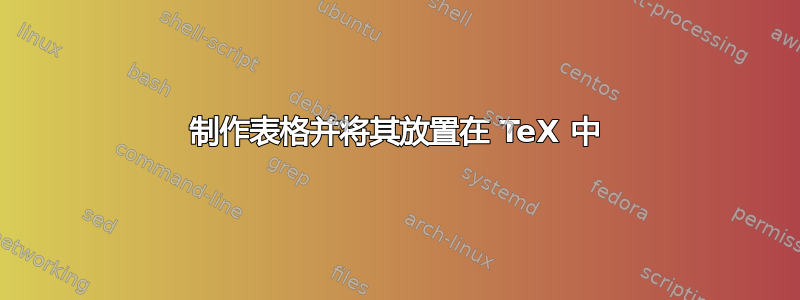
我使用一些网站制作了一个表格
\begin{table}[h]
\begin{tabular}{|c|c|c|c|c|}
\hline
\textbf{\begin{tabular}[c]{@{}c@{}}Mathematical \\ Term\end{tabular}} & \textbf{\begin{tabular}[c]{@{}c@{}}English \\ Expression\end{tabular}} & \textbf{\begin{tabular}[c]{@{}c@{}}Symbolic \\ Term\end{tabular}} & \multicolumn{2}{r|}{\textbf{\begin{tabular}[c]{@{}r@{}}Truth \\ \\ Table\end{tabular}}} \\ \hline
& & & \textbf{p} & \textbf{p'} \\ \cline{4-5}
Negation & Not P & p' & T & F \\ \cline{4-5}
& & & F & T \\ \hline
\end{tabular}
\end{table}
当我把它放在我的下面时,\begin{enumerate}我遇到了这个问题
我不知道如何:
1)给表格添加一些填充,这样边框看起来就不会挤压表格
2)将表移至相对于1)
希望有人能告诉我如何做这些。提前感谢你的帮助。
答案1
您正在使用float环境。浮动环境并非按照您的意愿设计。要执行您想要的操作,请摆脱浮动环境。
这是也许实现你想要的:
\documentclass{article}
\usepackage[margin=1.25in,showframe]{geometry}
\begin{document}
\begin{enumerate}
\item The negation of $p$, denoted by $\neg p$,
\begin{center}
\begin{tabular}{|c|c|c|c|c|}
\hline
\textbf{\begin{tabular}[c]{@{}c@{}}Mathematical \\ Term\end{tabular}} & \textbf{\begin{tabular}[c]{@{}c@{}}English \\ Expression\end{tabular}} & \textbf{\begin{tabular}[c]{@{}c@{}}Symbolic \\ Term\end{tabular}} & \multicolumn{2}{r|}{\textbf{\begin{tabular}[c]{@{}r@{}}Truth \\ \\ Table\end{tabular}}} \\ \hline
& & & \textbf{p} & \textbf{p'} \\ \cline{4-5}
Negation & Not P & p' & T & F \\ \cline{4-5}
& & & F & T \\ \hline
\end{tabular}%%
\end{center}
\item something else
\end{enumerate}
\end{document}
就我个人而言,除非您的线条填满整个页面的宽度,否则这看起来会很别扭或有点不对劲。但是,通过删除table(漂浮) 环境中,您将有更好的控制权将表放置在您想要的位置。
还有其他方法可以将对象置于页面中央。问题“我们什么时候应该使用 \begin{center} 而不是 \centering?”包含一些您可能觉得有用的信息。
顺便说一句,我怀疑你写这篇文章~p是为了得到
但是,这行不通。 ~创建一个不可中断的空格。它通常用在你不想跨行断开的单词之间,例如短标题和姓氏:Mr.~So-and-so。
为了获得潦草,您可以这样做,${\sim}p$。通常,\sim是一个二元关系,它周围有额外的空格填充。括号本质上消除这个填充。
此外,就我个人而言,我发现$p^\prime$(或)看起来比数学背景之外的$p'$好得多。p'





